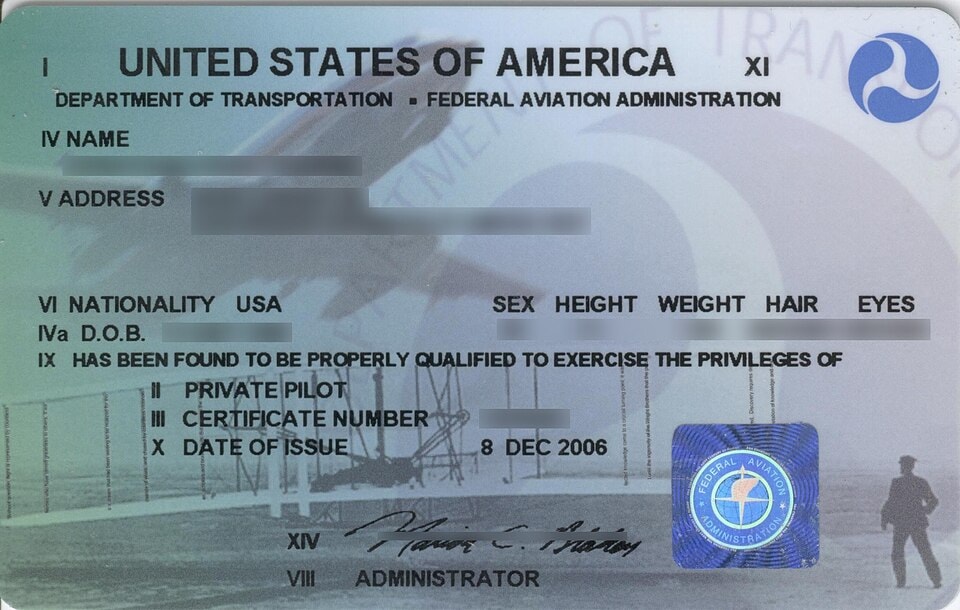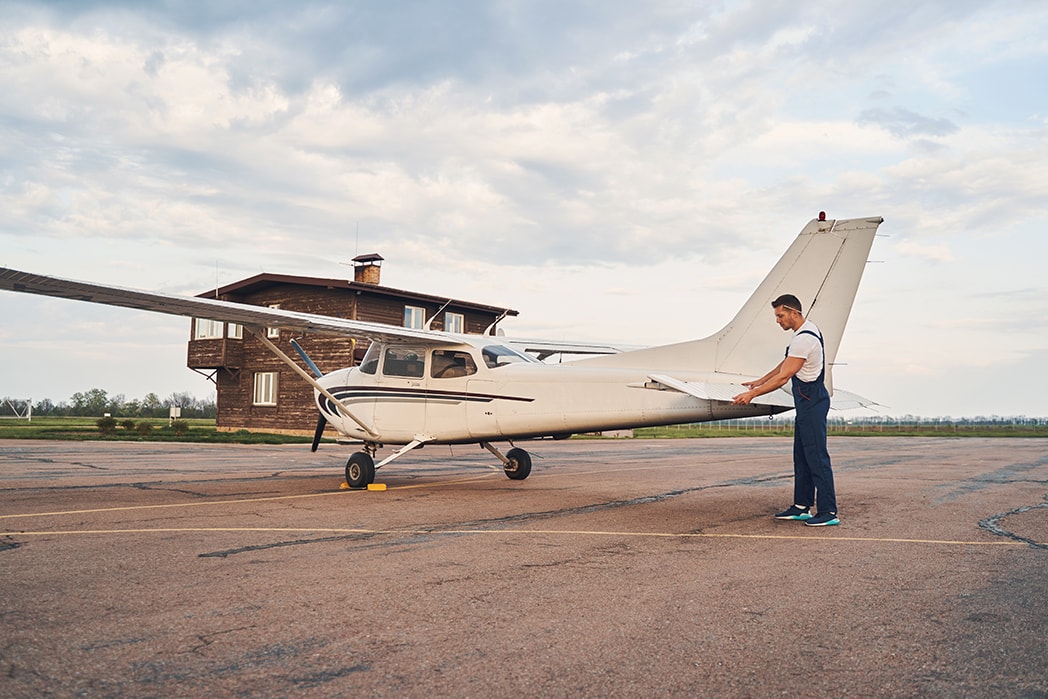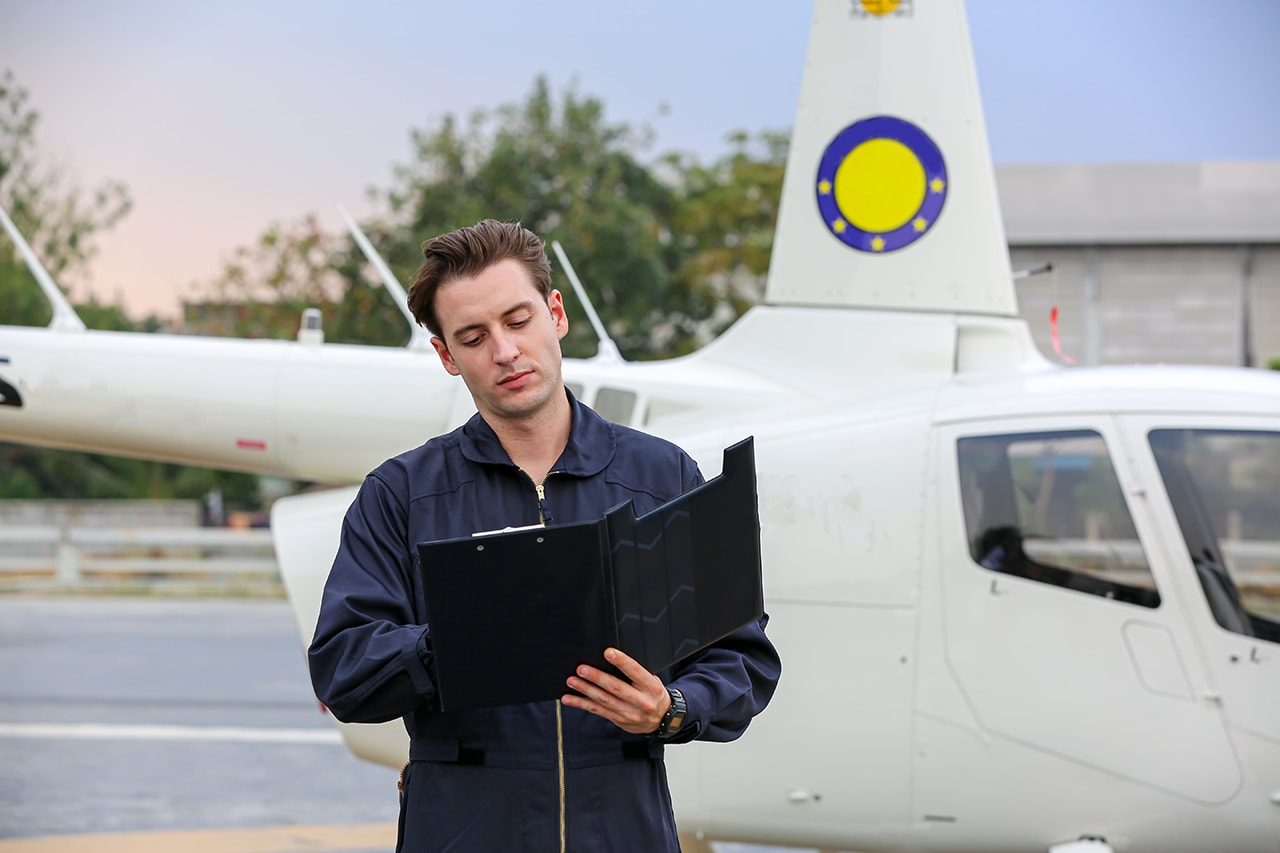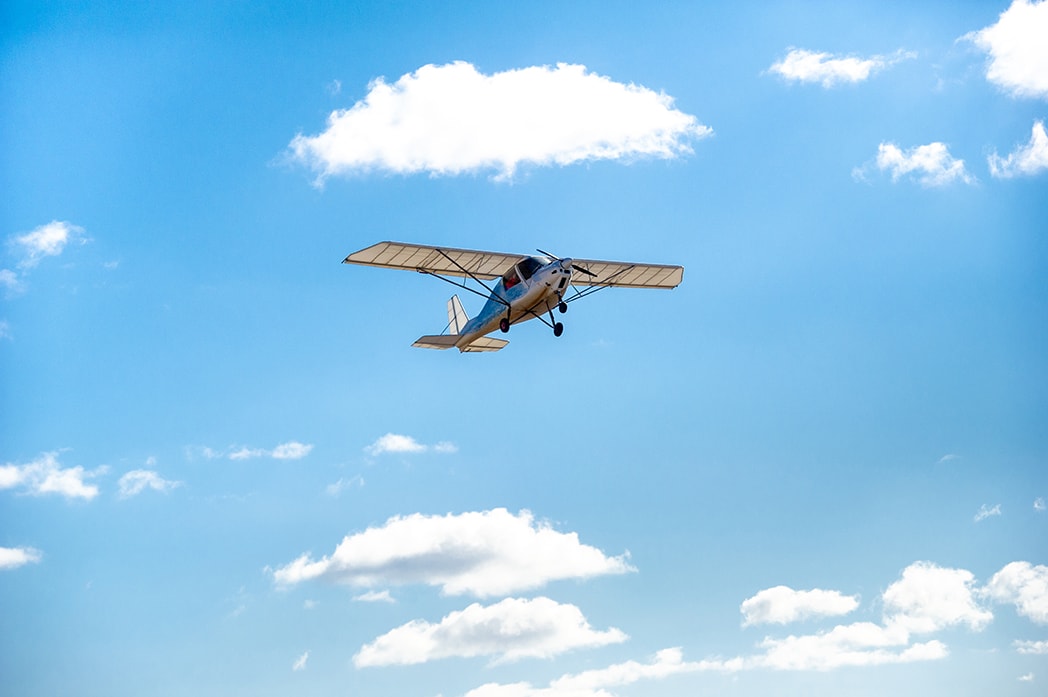What Does It Take to Get a Pilot License? Key Requirements
Jun 09, 2025
What does it take to get a pilot license? Well, you need to meet certain age, medical and language requirements, complete ground school and flight training, pass written and practical exams and pay the bills. This article will walk you through each of these steps so you can get flying, guiding you through the entire process of obtaining a pilot license.
Key Takeaways
-
The process to get a PPL is to complete ground school, flight training with at least 40 hours of flying and pass a check-ride.
-
Cost to get a PPL is between $15,000 to $18,000 which includes flight training, instruction fees and exam costs.
Understanding the Private Pilot License (PPL)
A Private Pilot License (PPL) is more than just a pilot’s license; it’s your ticket to the skies and is officially known as the FAA private pilot certificate.
This foundation license allows you to fly for fun, carry passengers and travel to different destinations while honing your flying skills making it ideal for recreational pilots who want to enjoy the freedom of flight without pursuing a commercial aviation career.
But a PPL doesn’t allow you to fly for commercial purposes that requires more training and certification, including getting a student pilot certificate, private pilot certificate (which is a type of pilot's license), and other pilot licenses.
The PPL is a stepping stone in aviation, it gives you the skills and knowledge for advanced ratings and certifications.
A Private Pilot License gives you the freedom to see the world from a different perspective, participate in aviation events and contribute to community services like search and rescue missions or charity flights. It’s the first big milestone in your journey to becoming a proficient and skilled private pilot.
Getting a PPL puts you in an elite group of people who have mastered the art of flying. Whether you want to become an airline transport pilot or just enjoy the thrill of flying, the PPL is your key to endless possibilities and adventures for airline pilots.
Requirements to Obtain a Private Pilot License

To get in the air, there are specific requirements to get a Private Pilot License. These are known as pilot certification requirements, which ensure you meet the necessary standards to become a certified pilot. The Federal Aviation Administration (FAA) has set these standards, so all pilots have the skills and knowledge to fly safely.
First and foremost, you must be at least 17 years old to get a PPL, except for gliders or balloons where the minimum age is lower. You must also be able to read, write, speak and understand English as communication is key in aviation. This so all pilots can understand and respond to air traffic control and other aviation professionals.
You must also pass a medical exam by an FAA designated Aviation Medical Examiner. This exam will assess your overall health and fitness to fly and ensure you meet the medical standards to fly and get a Medical Certificate and a third-class medical certificate.
Once these requirements are met you can start your journey to get your Private Pilot License by following the FAA guidelines, with the goal of obtaining your private pilot's license typically beginning with a student pilot permit before advancing to full certification.
Preparation and Dedication: What It Really Takes
Getting your private pilot license requires commitment, preparation and investment of time and money. To meet certification standards, you’ll need to log at least 40 hours of flight experience, which must include a minimum of 20 hours of dual instruction with a certified flight instructor and 10 hours of supervised solo flying.
In addition to flight hours you’ll need to complete ground school where you’ll study topics like aircraft systems, weather, navigation and aviation regulations.
Finding the right flight school and a good flight instructor is key to your success. A good instructor will guide you through each stage of training and help you build confidence and competence in the cockpit.
Enrolling in a private pilot license course that matches your goals and learning style can make a big difference in both your progress and overall experience.
The cost of getting a private pilot license varies depending on the school and location but most students can expect to invest between $8,000 and $15,000. This includes flight time, ground school and other training expenses. With dedication and the right support, you’ll be on your way to becoming a pilot and experiencing the freedom of flight.
Steps to Get Your Private Pilot License

Enrolling in a private pilot course involves several steps, each one building on the other:
-
Ground school where you’ll learn the theory of aviation.
-
Hands-on flight training, which includes flight lessons that develop your practical flying skills and prepare you for solo flights and cross-country experiences.
-
Check-ride, a comprehensive exam that tests your practical flying skills and aeronautical knowledge during private pilot training.
Each step is important to become a competent and confident pilot. The following sections go into more detail for each step, with tips to help you through the whole process.
Enroll in Ground School
Ground school serves as the essential starting point for your journey into aviation, introducing you to key topics such as aerodynamics, flight regulations, navigation, and weather systems.
This phase gives you the theoretical knowledge to understand the principles of flight and the rules of aviation theory. Aircraft systems, weather patterns and emergency procedures are also covered so you have a complete understanding of the aviation environment.
Passing the FAA written exam, also known as the knowledge test, is a big milestone in ground school training. As part of the process to obtain your Private Pilot License, you are required to pass a written exam that tests your knowledge of the material covered in ground school. Passing this exam shows you have acquired the necessary aviation knowledge to move on to the next phase of your training.
Ground school is not just about passing exams; it lays the groundwork for your practical flying lessons. The concepts and theories you learn here will be applied during flight training at flight schools and will make you a well rounded and knowledgeable pilot.
Most students find full ground school to be a great experience that deepens their appreciation for the complexity and beauty of flying. It’s also an important factor to consider when estimating your total private pilot license cost. If you’re ready to begin, consider enrolling in the ground school at Flight Nerd Air Force a trusted source for high-quality aviation education.
Complete Flight Training
This is where the magic happens. Hands on flying lessons where you will learn pre flight preparation, takeoffs and landings, basic maneuvers and navigation. Your training will include required elements such as cross country flight, solo cross country flight, and night flying. You will also be trained to handle in-flight malfunctions and emergency situations so you are prepared for anything, including flight training requirements.
To get a Private Pilot License you must complete a minimum of 40 hours of flight time, 20 hours with an instructor and 10 hours solo. On average most student pilots take around 75 hours to complete their training according to FAA stats.
Flight simulators can be used during training to reduce actual flight time and still get valuable practice. Throughout this process, you will develop piloting skills and learn to fly aircraft safely and confidently.
Completing flight training is a big deal, you are now a student pilot turned aviator. These experiences will shape your flying skills and give you the confidence to get through the final hurdle, the check-ride.
Pass the Check-Ride

The check-ride is the final step to getting your Private Pilot License. This is the practical exam required for certification, and it consists of two parts: an oral exam and a practical flight test, both given by an FAA examiner. The oral exam tests your knowledge and decision making skills on various aspects of aviation.
The practical flight test requires you to demonstrate flying proficiency by performing various maneuvers and procedures under the examiner’s eye. This includes:
-
Pre-flight inspections
-
Takeoffs
-
Landings
-
Emergency procedures
-
Practical test
You will showcase your ability to fly the aircraft safely and competently in different scenarios while you fly solo cross country, including various aircraft maneuvers.
Once you pass the check-ride you will be awarded your Private Pilot License. You have met all the requirements and now you can fly the aircraft by yourself, and you’re off and flying as a licensed pilot.
Costs Involved in Getting a Private Pilot License
Getting a Private Pilot License is a big investment. The total cost of a private pilot license can range from $6,000 to over $20,000 depending on the flight school, type of aircraft and where you are training. On average most students spend between $15,000 to $18,000 to get their PPL.
Primary expenses include flight training, which requires a minimum of 40 hours of flying experience. This typically involves:
-
Airplane rental costs ranging from $5,000 to $15,000
-
Instruction fees between $1,000 and $5,000
-
Flight gear (approximately $500)
-
Study materials (around $250)
-
Examination costs (about $750)
Understanding these operating expenses upfront can help you plan and manage your finances effectively, ensuring you are prepared for the financial commitment required to achieve your aviation goals.
Duration to Earn Your Private Pilot License

The time it takes to get a Private Pilot License varies greatly depending on your schedule and circumstances.
Full time students can do it in 2-6 months, depending on how dedicated and how often you fly. Part time students can take 3-9 months to complete, depending on availability and consistency.
Factors that affect training time are flight frequency, individual learning pace and even the time of year. Students who fly regularly and immerse themselves in their training tend to progress faster than those who train sporadically and often get extra training. Several factors contribute to this.
Regardless of the time frame, getting a PPL is a great experience that teaches you valuable skills and gives you a new perspective on the world. The license is valid forever as long as you do a flight review every 24 months.
Advanced Ratings and Future Steps
Getting a Private Pilot License is just the beginning. This opens the door to more flying opportunities. To advance skills and career, the next step is often an instrument rating. This rating allows you to fly by instruments only, which is essential for flying in a wider range of weather conditions and increasing safety. Obtaining advanced ratings and becoming a flight instructor requires additional training beyond the private pilot level.
Pilots wanting to fly bigger, multi engine aircraft can get a Multi-Engine Rating to fly more complex and capable airplanes. Want to turn passion into a profession? A Commercial Pilot License is the key to getting paid for flying services, especially for commercial pilots.
Becoming a Certified Flight Instructor (CFI) is a popular path for many pilots. This allows you to teach others and build flight time to meet airline hiring requirements. Each of these advanced ratings opens up more doors and opportunities in aviation.
Meet Your Flight Instructors
Flight instructors are key to your journey to becoming a pilot. These experienced pros have multiple ratings and certifications like CFI or MEI and can teach a wide range of skills. Their hours and experience in many different aircraft give them real world insight to help your training.
One of those instructors is Ben Johnson, Founder of Flight Nerd Air Force. Ben is an FAA certified Advanced Ground Instructor (AGII), Private Pilot (PPL), and licensed A&P mechanic. With a passion for aviation education and a unique background in humanitarian flying and military service, Ben brings depth, clarity, and inspiration to every lesson.
Instructors use a mix of ground instruction and in flight training to accommodate different learning styles so you get personalized and effective instruction. Choosing the right flight instructor is critical to your success as they will help build the skills and confidence to become a proficient pilot.
Working with knowledgeable and supportive flight instructors you’ll gain the expertise and confidence to tackle pilot training and achieve your aviation goals to become a pilot through instrument flight training in a pilot program.
Summary
Getting a Private Pilot License is an amazing and life changing experience that opens up the world. From ground school to flight training to check-ride, each step of the journey is designed to build your skills and confidence as a pilot. The financial and time investment is big but the payoff is being able to fly solo and explore the skies.
Advanced ratings and certifications offer more opportunities for growth and career advancement whether you want to be a commercial pilot, flight instructor or just want to improve your flying skills. Experienced flight instructors are key to your success helping you navigate the complexities of pilot training.
As you start this journey remember the sky is not the limit it’s just the beginning. Take the first step towards your aviation dreams and experience the freedom and joy of flying.
